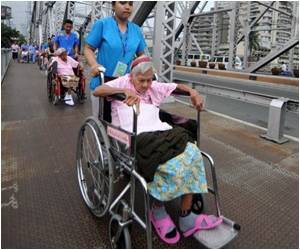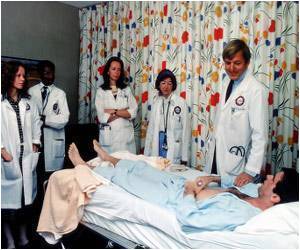
While hitherto available passive aids such as air, gel or vacuum cushions relieve pressure, they do not relieve the affected area optimally. Some patients are also unable to actively control the distribution of pressure and alleviate their own suffering. They are dependent on others for help.
Researchers at the Fraunhofer Institute for Factory Operation and Automation IFF in Magdeburg are endowing textile cushions with the capability to "feel" by outfitting them with smart sensor systems.
"Every person has a unique build, which must withstand differing compressive loads," said Martin Woitag, research manager at the Fraunhofer IFF.
"Our sensor mat made of ordinary foam and conductive threads automatically detects how a person is sitting or lying, and automatically equalizes the pressure at endangered points by activating an actuator. One hundred measured points on a typical seat suffice to do this."
The trick is that the tactile sensor mat functions based on the principle of a parallel-plate capacitor. Instead of plates, two textile components are employed, which form sensor cells arranged in a matrix. Conductive thread functions as an electrode. Sensor cells are mounted in commercially available foam at intervals of four centimeters.
Advertisement
If, for instance, the sensors indicate that the pressure to the rear right is too high, then air is let out of the cushion at that spot - the cushioning is modified flexibly and selectively.
Advertisement
"Since all the materials we use are inexpensive, we can already produce single items for a few hundred euros," added Woitag. nother advantage is that the weave of the textile employed is breathable and thus prevents moisture buildup. Present systems rely on film technology, which causes sweating.
At around one centimeter, the sensor pad is so thin that it can be integrated in existing applications without any problem. A mat has been prototyped in various shapes and pressure resolutions.
First, wheelchair users' lives will be bettered. Then, the researchers intend to test the system in mattresses, too. In addition to the medical field, the experts are setting their sights on other fields of application: Drivers spend long hours behind the wheel and therefore often suffer from back problems. When integrated in truck seats, the sensor mat will provide drivers more comfort and help prevent postural defects.
Source-ANI









